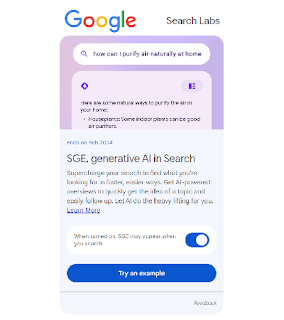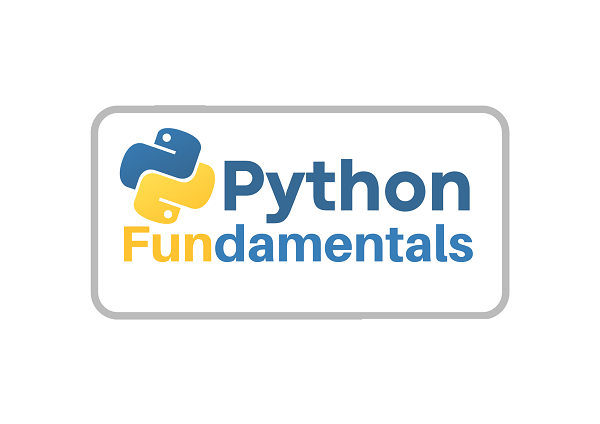What are Large Language Models (LLMs)? A Comprehensive Guide
Want to know everything about Large Language Models (LLMs)?
Large Language Models (LLMs) have taken the world by storm, revolutionizing the way we use language in technology. From chatbots to speech recognition and content generation, LLMs are behind some of the most exciting advancements in AI. In this comprehensive guide, we cover everything you need to know about LLMs, including their history, technical aspects, applications, and future implications. Whether you're a seasoned expert or a newcomer to the field, this guide has something for everyone.
Language is one of the most complex and nuanced things that humans do. Large Language Models (LLMs) are machines that can process language and understand it in a way that was previously impossible. With recent breakthroughs in Artificial Intelligence (AI), LLMs have become incredibly popular and are being used to solve a variety of problems. In this blog post, we will explore everything you need to know about LLMs, their history, how they work, and what they are capable of.
What are Large Language
Models?
Language models are
computer programs that use artificial intelligence to understand and process
language in a way that's similar to how humans do. Large Language Models (LLMs)
are a specific type of language model that has recently gained a lot of
attention in the tech industry due to their impressive capabilities.
At their core, LLMs are
designed to understand and generate natural language text. They are trained on
massive datasets of text, such as books, articles, and other written material.
By analyzing and processing this data, LLMs can learn patterns in language and
use this knowledge to generate coherent and often realistic text.
There are different types
of LLMs, such as Transformer-based models, Recurrent Neural Network (RNN)
models, and Convolutional Neural Network (CNN) models. Transformer-based models
are currently the most popular and powerful LLMs, and they are used in many
cutting-edge language applications.
LLMs are being used in
various applications, such as machine translation, text summarization, and
chatbots. They are also used in the field of natural language processing (NLP),
which focuses on creating algorithms and tools that can understand and process
human language.
One of the most
impressive LLMs currently in use is GPT-3 (Generative Pre-trained Transformer
3), which was developed by OpenAI. GPT-3 is capable of generating incredibly
realistic and coherent text, and it has been used in applications such as
chatbots and text completion tools. Another popular LLM is BERT (Bidirectional
Encoder Representations from Transformers), which is widely used in natural language processing tasks such as sentiment analysis and text classification.
T5 (Text-to-Text Transfer Transformer) is another notable LLM that has been
used for tasks such as question answering and text summarization.
Overall, Large Language
Models are an exciting development in the field of artificial intelligence and
natural language processing. With their impressive capabilities, they have the
potential to revolutionize how we interact with and process language.
How do Large Language
Models Work?
At their core, LLMs are
designed to process and understand natural language. This involves a complex
combination of algorithms and techniques known as Natural Language Processing (NLP). NLP is a subfield of artificial intelligence that focuses on enabling
computers to understand human language.
One of the key components
of LLMs is their use of attention mechanisms. These mechanisms allow the model
to focus on specific parts of a piece of text that are most relevant to the
task at hand. This improves the model's ability to understand and process
natural language.
Another important
component of LLMs is the use of Transformers. Transformers are a type of neural
network architecture that are particularly effective at processing sequential
data, such as natural language text. By using transformers, LLMs are able to
learn and recognize patterns in language data, and then use this knowledge to
generate text.
The training process for
LLMs is complex and time-consuming. Typically, LLMs are trained using massive
amounts of text data, such as books, articles, and other written materials.
During training, the model is presented with text inputs and must predict the
next word or sequence of words. The model is then adjusted based on the
accuracy of its predictions, with the goal of improving its ability to generate
coherent and natural-sounding text.
Despite the challenges
involved in training LLMs, the results can be truly impressive. Models like
GPT-3, BERT, and T5 are able to generate text that is often difficult to
distinguish from text written by humans. As these models continue to improve,
they will likely become even more powerful tools for processing and
understanding natural language.
The History of Large
Language Models
Language models have come
a long way since the early days of Natural Language Processing (NLP). In this
chapter, we will take a stroll down memory lane and explore the history of
Large Language Models (LLMs). We'll start with the early days of NLP models,
where the focus was primarily on rule-based systems that attempted to mimic
human language. These models had limited success, as the complexity of language
made it difficult to capture all the nuances and variations.
The breakthrough came
with the introduction of statistical models, which used large corpora of text
to learn patterns and relationships in language. This approach allowed for more
accurate predictions and opened the door for the development of LLMs. The first
significant LLM was the Neural Machine Translation (NMT) model, which was
introduced in 2014 and marked a significant leap forward in the field of NLP.
From there, LLMs
continued to evolve rapidly. In 2017, Google introduced the Transformer
architecture, which revolutionized the way LLMs are trained by incorporating an
attention mechanism that allows the model to focus on the most important parts
of the input sequence. This led to the development of models like BERT and
GPT-2, which set new standards in language modeling.
Today, the
state-of-the-art LLM is GPT-3, which was introduced by OpenAI in 2020. GPT-3
has been hailed as a breakthrough in natural language processing and is capable
of generating human-like text on a wide range of topics. It has already been
used in various applications, from chatbots to content creation.
The history of LLMs is a
testament to the power of innovation and the dedication of researchers and
institutions who have pushed the boundaries of what is possible. As we continue
to develop LLMs, we can only imagine the possibilities that lie ahead.
Applications of Large
Language Models
Large Language Models
(LLMs) are revolutionizing the way we interact with technology. In this
chapter, we will explore the diverse range of applications that LLMs are being
used for.
One of the most prominent
applications of LLMs is in language translation. LLMs are able to accurately
translate between languages and have greatly improved the quality of machine
translation. This has been particularly helpful in breaking down language
barriers and allowing for better communication between people of different
cultures.
LLMs are also being used
in chatbots and virtual assistants. These models can generate human-like
responses to natural language queries, making interactions with chatbots feel
more conversational and less robotic. This technology has been widely adopted
by businesses, providing customers with instant support and personalized
experiences.
Another area where LLMs
are being applied is in content generation. With the ability to generate large
amounts of text, LLMs are being used to create articles, summaries, and even
novels. This has helped content creators to save time and effort while still
producing high-quality content.
Speech recognition is
another area where LLMs are being used. They are able to transcribe speech with
high accuracy, making it easier for people with hearing impairments to
communicate. Additionally, LLMs are being used to generate synthetic speech
that sounds like a human voice, providing greater accessibility to those who
may have difficulty speaking.
While the benefits of
LLMs are clear, there are still challenges that need to be addressed. One of
the biggest challenges is ensuring the ethical use of LLMs. Researchers and organizations
must be aware of potential biases and work to prevent their models from
perpetuating them. Additionally, there are concerns about the impact of LLMs on
employment, particularly in areas like content generation and translation.
Despite these challenges,
the applications of LLMs are vast and continue to expand. As technology
continues to evolve, we can expect to see even more innovative uses of LLMs in
the future.
The Future of Large
Language Models
In recent years, Large
Language Models (LLMs) have rapidly evolved and become increasingly
sophisticated. With their ability to generate human-like text and understand
natural language, LLMs are revolutionizing various fields such as natural
language processing, machine learning, and artificial intelligence.
One area where LLMs are
expected to have a significant impact is in language translation. With their
ability to understand context and syntax, LLMs can provide accurate
translations in real-time. This could help break down language barriers and
facilitate communication between people from different parts of the world.
Similarly, LLMs can also be used for chatbots and virtual assistants, making
interactions with machines more human-like and intuitive.
Another potential
application of LLMs is in content generation. LLMs are capable of producing
text that is indistinguishable from text written by humans, making them useful
in a range of fields such as journalism, marketing, and creative writing. They
can generate articles, reports, and even entire books, saving time and
resources for businesses and individuals alike.
However, the use of LLMs
also raises ethical and societal concerns. One of the primary concerns is the
potential for bias in the data used to train LLMs, leading to discriminatory
outcomes. Moreover, LLMs can be used to generate fake news or propaganda,
further exacerbating the issue of misinformation. As such, it is essential to
carefully consider the ethical implications of LLMs and work to mitigate any
negative impacts.
Despite these concerns,
the future of LLMs looks promising. Ongoing research in this field is focused
on improving the accuracy and efficiency of LLMs, expanding their capabilities,
and addressing ethical issues. As we move forward, it is crucial to balance the
potential benefits of LLMs with the ethical and societal implications of their
use.
Conclusion:
Large Language Models are
a rapidly evolving technology that has the potential to revolutionize various
fields. They offer a range of exciting applications, from language translation
to content generation, making them an essential tool in the modern era.
However, it is essential to consider the ethical and societal implications of
their use and ensure that their benefits are realized without any negative
consequences.




Comments
Post a Comment